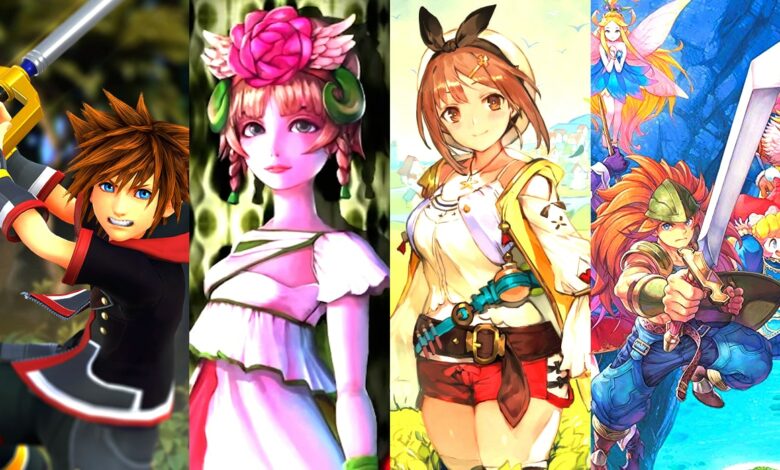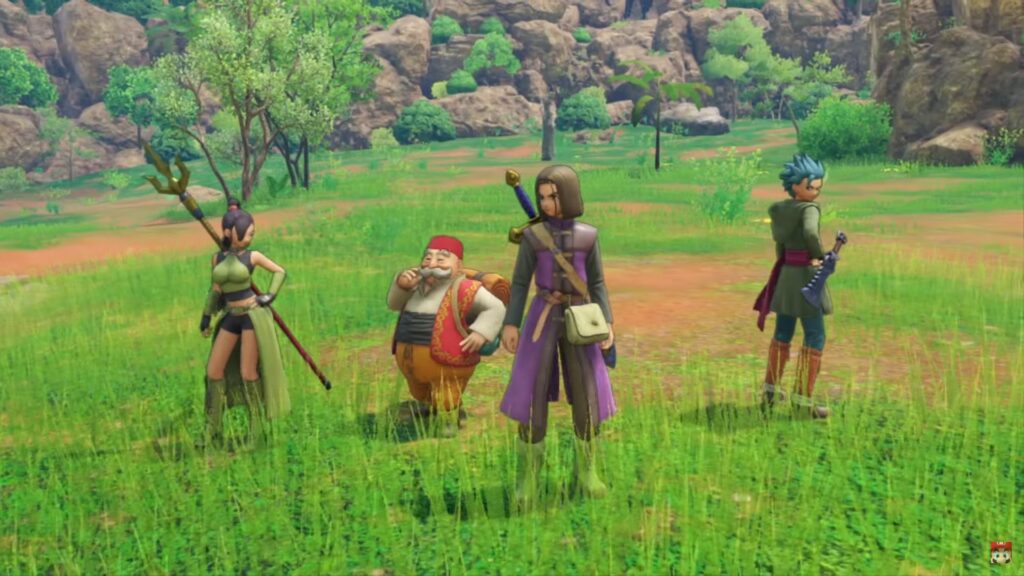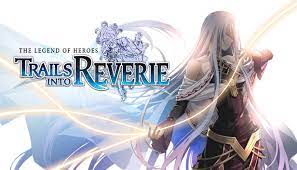The four-step recipe for an awesome JRPG
As we await The Legend of Heroes: Trails into Reverie, here are four ingredients that make for an awesome JRPG!

Love ‘em or hate ‘em in all their grindy, mawkish glory, Japanese role-playing games (or JRPGs, to the acronymically-inclined) have captured the hearts of gamers around the world for decades. They’ve inextricably established themselves as a beloved genre within the industry, and pretty much everyone of a certain age can name one that has had a profound impact on them; one that they sunk hundreds of hours into; or one that they’d never touch again even if they were paid to. (For me? Paper Mario, Xenoblade, Digimon World. Long story.) But what exactly makes a JRPG great? Well, that sure is subjective – but I’d argue you can distill it down into a set of basic formulae; formulae which the absolute trendsetters of the genre have employed to great effect time and time again. Kind of like the Big Mac sauce, but significantly less sticky. Or more sticky. Depends on the game.
Time to reveal the secrets of the trade, then. In this article, we’ll delve into the top four elements that contribute to the success of a fantastic JRPG – selected by yours truly – with specific examples from some iconic titles. Swords and shields up. March!
1. Engaging storyline
Let’s start with an obvious one. A compelling and immersive storyline lies at the core of any great JRPG, turning what could otherwise have been a boring affair of mashing buttons repeatedly for hours on end into an emotional experience. An emotional experience STILL spent mashing buttons repeatedly for hours on end, but hey, can’t win them all.
/cdn.vox-cdn.com/uploads/chorus_image/image/66662889/ply_cloudff_grading.0.jpg)
These games often transport players to richly developed fictional worlds, brimming with depth and lore for those who care to seek it. Well-crafted narratives keep players invested in the game, eager to uncover the next mind-blowing, or indeed laughably nonsensical, twist or turn. An early, and notable, example is Final Fantasy VII; an epic tale that chronicles the adventures of Cloud and his spiky-haired posse, codifying many JRPG tropes in the process. Its intricate story, memorable characters (including the one-winged Sephiroth, and Aerith who, er, you might not want to get too attached to) and thought-provoking themes make for an odyssey that resonates long after the game is over.
The time-travelling saga of Chrono Trigger is another shining demonstration of the importance of narrative. Xenoblade Chronicles, a stellar display of character depth and arcs; and of the hilarity that ensues when you chuck Yorkshire accents into the mix. And in more modern times, Kingdom Hearts, with all its fanfiction-tier levels of intricacy and reality-warping existentialism – tinged with the twee faces of Disney characters – carries the storytelling torch in style. I can’t wait for the fourth mainline entry, and its 50th Xehanort clone.
2. Strategic, turn-based combat
One of the defining features of JRPGs, and the element that is often the make-or-break for whether this genre will be for you, is turn-based combat; where players take turns executing actions. Yep, the rampaging orcs on the opposing team will inexplicably exercise great manners and restraint while you spend upwards of 10 minutes poring over menu options.

Great JRPGs strike a delicate balance between accessibility and depth, allowing players to gradually ascend the learning curve and, in doing so, develop strategic approaches to battles. The Dragon Quest franchise, dating back to the NES, showcases excellent turn-based combat mechanics of this nature. Elusive Age gets my pick for cream of the DQ crop, though. It offers a variety of character classes, a wide range of abilities, and a comical number of enemy weaknesses to exploit, giving players plenty of options for tactical decision-making. Want to bash a Slime’s head in with a soup ladle? Go for it, but an ice spell would likely work better. Engaging in such cerebral battles and devising effective strategies becomes a satisfying, and inextricable, part of the gameplay experience.
On that note, I’d also recommend Persona; it showcases a brilliant combat system that requires players to do all of the above, while also managing their party’s resources and doling them out carefully. Think Harvest Moon, but with lives on the line. The game encourages your noggin to think strategically, utilising the correct skills and forming advantageous alliances with ‘Personas.’ Ah, see, that’s where the name comes from. Clever. In short, the intricate combat systems of JRPGs keep players engaged and reward thoughtful planning.
3. Immersive exploration
Much as it’s become a buzzword in modern gaming culture, exploration is another vital aspect of JRPGs, offering players the opportunity to venture into vast and detailed worlds. An exemplary JRPG will provide a sense of wonder and discovery (feelings that are not conjured up so easily, Ubisoft) with hidden treasures, secret areas, and side quests aplenty that reward exploration.
I’m going to be a bit cheeky with this next example. The Legend of Zelda: Breath of the Wild, and its record-smashing followup Tears of the Kingdom, may not be a traditional JRPG in the stuffy dictionary sense; but its emphasis on exploration perfectly captures the spirit of the genre nonetheless. Its vast open world is filled with diverse landscapes, ancient ruins, marauding Lynels, and countless secrets to uncover, inviting those brave enough to embark on an unforgettable journey of discovery. And Korok seeds. Endless, endless Korok seeds.

I’d also be remiss if I didn’t mention one of my favorite JRPG series in this context (developed by one of my fave studios, actually, who are enjoying a comeback this year): Level-5’s Ni no Kuni. The series, animated and designed by the legendary Studio Ghibli, offers a beautifully realized, cell-shaded world filled with vibrant landscapes, bustling towns, and hidden nooks that inspire childlike whimsy.
As the stick-wielding kid Oliver, and accompanied by the deliciously Welsh fairy Drippy, you’ll explore diverse painterly regions – and, in the sequel, recruit citizens to help build and expand your kingdom. Ah, colonialism. This masterpiece of a duology is the only time I’ve almost cried at a gaming plot. Almost. (The third Professor Layton game, ironically also from Level-5, got damn close too. RIP Claire.)
4. Rich character progression
Lastly, a nuance that I think a lot of devs don’t always pay attention to. Character progression is a fundamental element of JRPGs; it allows players to develop their party members and customize their abilities. It’s all very well writing emotionally complex protagonists. However, if you can’t do much more with them than swinging the sword grafted to their arm, what depth is there? A good JRPG offers a sophisticated and rewarding progression system. This provides a sense of growth and accomplishment over the course of the adventure. To return to the great Square Enix, Final Fantasy X has a robust progression mechanic, called the Sphere Grid. You’ll utilize it often, strategically selecting abilities from a branching grid. This empowers players to tailor their party members to their preferred playstyle. And ultimately, it results in a more personalized (and hence more meaningful) experience.

This is all to say nothing of Xenoblade’s recurring “Affinity Chart,” basically the pinnacle of the concept. By fostering conversation and gifting items between characters, you can strengthen their bonds and even unlock alternate cutscenes. Will the oafish Reyn shack up with the recently-widowed (and ludicrously curvaceous) Sharla? It’s in your hands.
A new JRPG adventure begins soon!

Now, we are nearing the start of a new JRPG adventure in The Legend of Heroes: Trails into Reverie. The Legend of Heroes: Trails Into Reverie looks to be ensuring that punters will have a rewarding RPG experience. It’s a comprehensive package that caters to avid fans of the series in particular. Lace up your shoes (with gratuitous belts and zippers on ‘em), RPG fans!
The Legend of Heroes: Trails Into Reverie launches on July 7 for PlayStation 5, PlayStation 4, Nintendo Switch and PC. Pre-order on Steam here.
Are you excited for The Legend of Heroes: Trails into Reverie? And what do you think makes for a great JRPG? As always, let us know what you think down in the comments!

